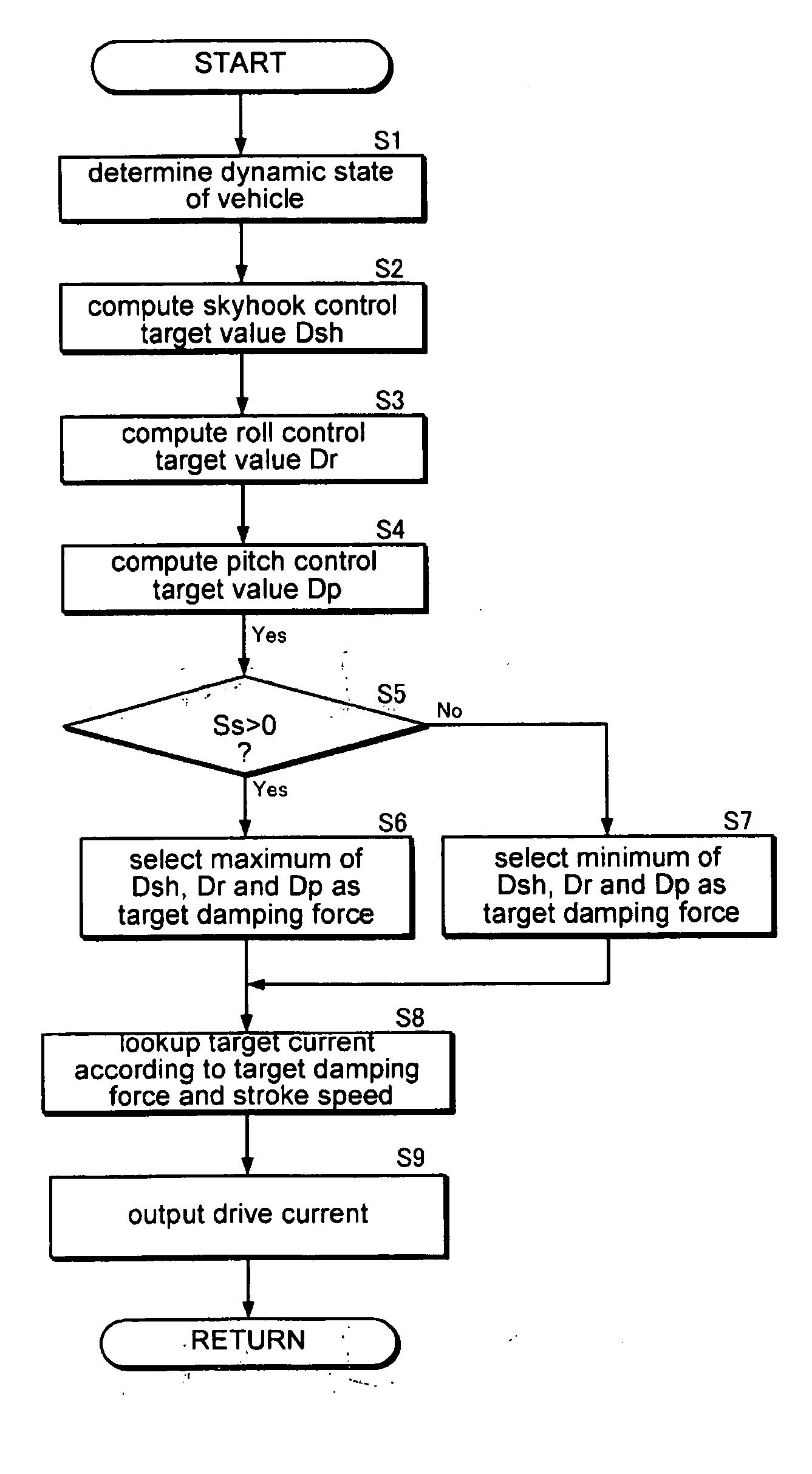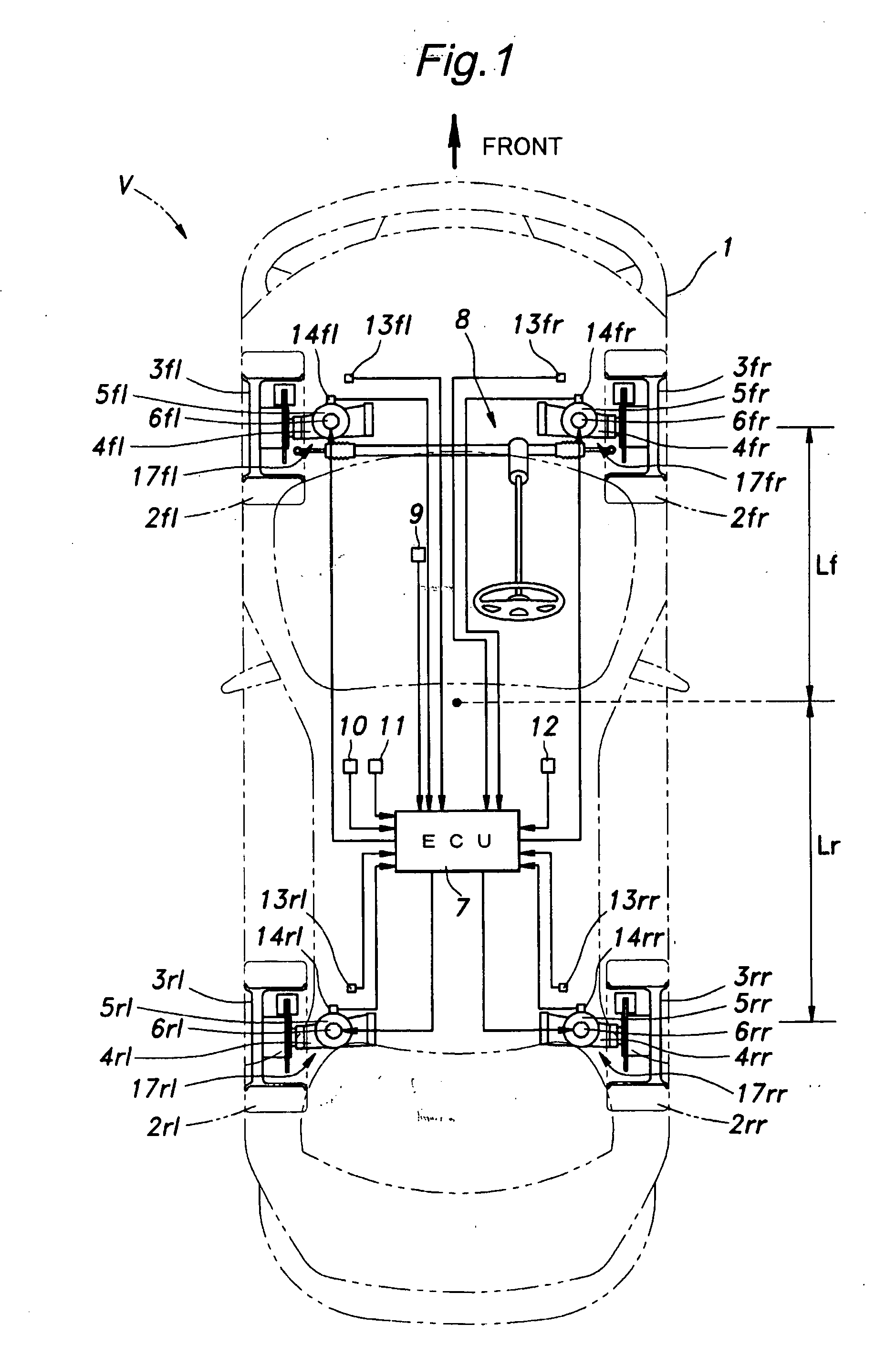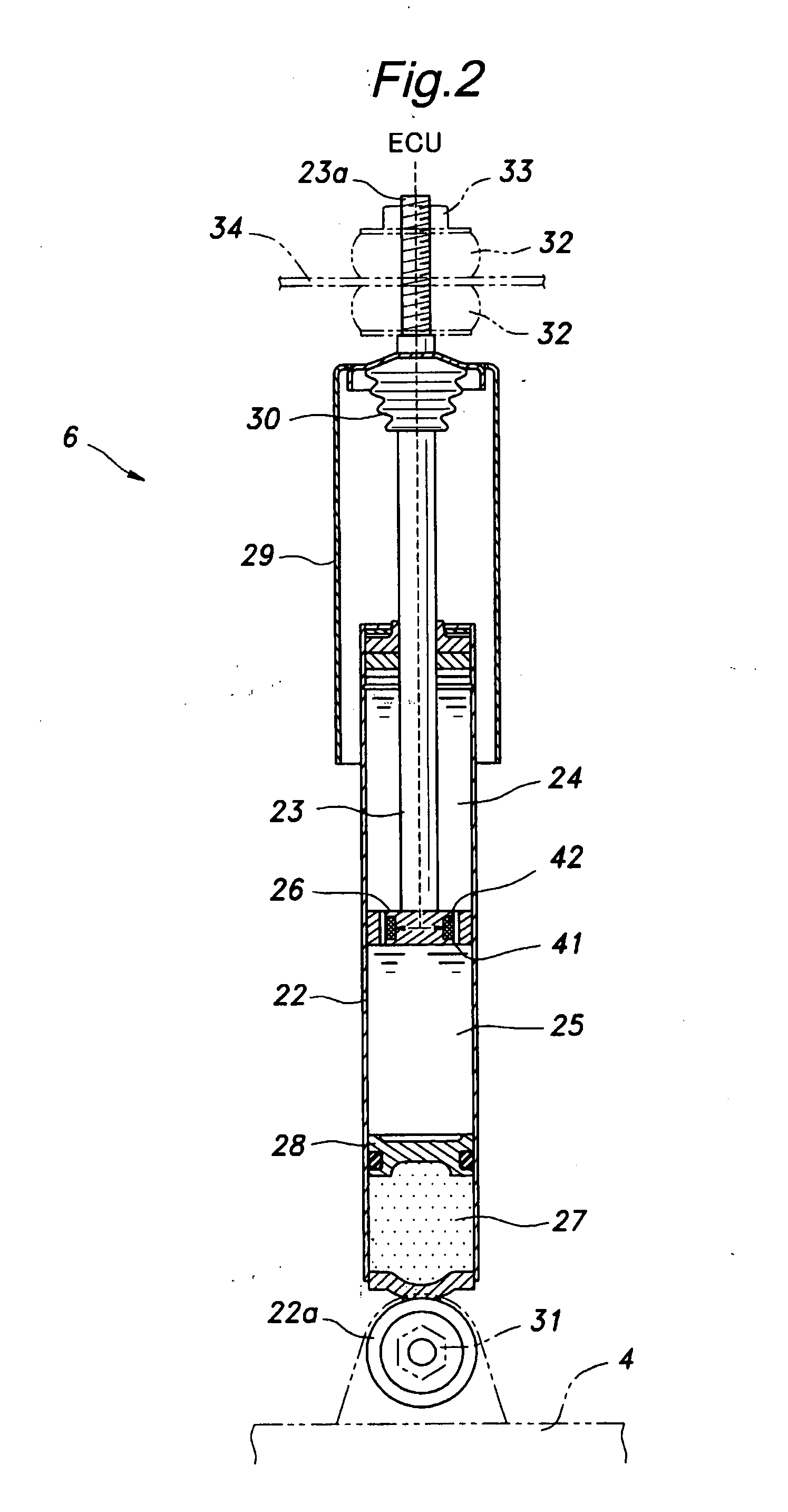Control device for a wheel suspension system
a technology of control device and suspension system, which is applied in the direction of cycle equipment, instruments, transportation and packaging, etc., can solve the problems of unfavorable control of vehicle behavior such as vertical movement, rolling movement, pitching movement, etc., and achieve the effect of preventing the undesired response of the vehicle body
- Summary
- Abstract
- Description
- Claims
- Application Information
AI Technical Summary
Benefits of technology
Problems solved by technology
Method used
Image
Examples
first embodiment
[0103] the sprung mass speeds of the different wheels can be brought to mutually similar values when performing a feedback skyhook control of the vertical movement of each wheel based on the corresponding sprung mass speed by using the right front wheel 3fr, or any other wheel, as the reference wheel for providing a correction gain for the feedback control.
[0104]FIG. 9 shows the sprung mass speeds v2 of the front wheels 3fr and 3fl and rear wheels 3rr and 3rl when the control process of the first embodiment is executed. When the vehicle is traveling a road that slants upward or downward, the sprung mass speeds are brought close to each other, and the pitching movement of the vehicle body can be avoided. Similarly, although not shown in the graph, according to the first embodiment, the sprung mass speeds v2 of the right wheels 3fr and 3rr and left wheels 3fr and 3fl may be similarly brought close to each other, and the rolling movement of the vehicle body can be avoided when the vehi...
second embodiment
[0108] the sprung mass speeds of the different wheels can be brought to mutually similar values so that undesired pitching and rolling movements may be reduced by performing a feedback skyhook control of the vertical movement of each wheel based on the corresponding sprung mass speed by using the right front wheel 3fr, or any other wheel, as the reference wheel for providing a correction gain for the feedback control while doing away with the skyhook control base values for the non-reference wheels.
third embodiment
[0109]FIGS. 11 to 13 show the present invention. The parts corresponding to those of the previous embodiments are denoted with like numerals without repeating the description of such parts.
[0110]As is typically the case, the wheel suspension systems of the illustrated embodiment are configured such that the natural frequencies Fn of the wheel suspension systems of the different wheels are identical to one another when the vehicle V is traveling over a horizontal road surface as shown in FIG. 17. FIG. 17, and FIGS. 18 and 19 which are to be discussed hereinafter, show the relationship between an amplitude ratio of the amplitude of an sprung mass movement to the amplitude of road surface irregularities and the frequency. The amplitude ratio is given in a logarithmic scale (20*log10x). Therefore, the smaller the value of the amplitude ratio is, the smaller is the amplitude of the sprung mass movement for a given input of road surface irregularities.
[0111]Referring to FIG. 11, the dampi...
PUM
 Login to View More
Login to View More Abstract
Description
Claims
Application Information
 Login to View More
Login to View More - R&D
- Intellectual Property
- Life Sciences
- Materials
- Tech Scout
- Unparalleled Data Quality
- Higher Quality Content
- 60% Fewer Hallucinations
Browse by: Latest US Patents, China's latest patents, Technical Efficacy Thesaurus, Application Domain, Technology Topic, Popular Technical Reports.
© 2025 PatSnap. All rights reserved.Legal|Privacy policy|Modern Slavery Act Transparency Statement|Sitemap|About US| Contact US: help@patsnap.com



